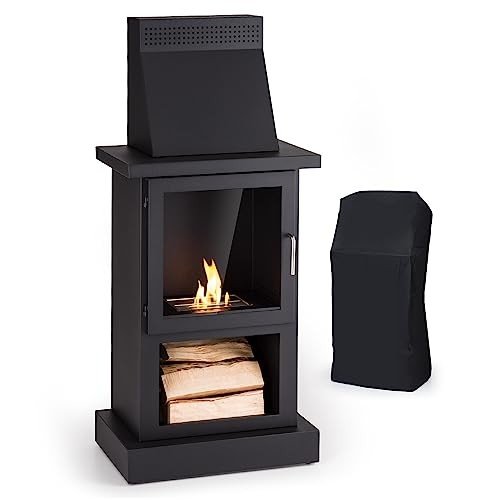
Fireplace Styles
Add a reviewOverview
-
Sectors Health Care
-
Posted Jobs 0
-
Viewed 1
Company Description
5 Killer Quora Answers To Fireplace
The Charm and Functionality of Fireplaces: A Comprehensive Guide
Fireplaces have long been a central feature in homes, symbolizing warmth, companionship, and comfort. They are available in different styles, materials, and fuel types, dealing with the preferences and requirements of varied house owners. This article digs into the multifaceted world of fireplaces, exploring their history, types, installation factors to consider, and upkeep pointers, while supplying FAQs to address common inquiries.
A Brief History of Fireplaces
Historically, fireplaces served as the foundation for cooking and heating homes. In ancient times, an open hearth was frequently placed in the center of a house. Over centuries, architectural developments helped with the advancement of more sophisticated designs, progressing from simple stone structures to elaborate mantels that command modern living areas.
Key Historical Milestones:
- Ancient Times: Open fires in caverns and primitive huts for heat and cooking.
- Middle Ages: Large, frequently centralized chimney structures in terrific halls of castles.
- Renaissance: Decorative mantels and designs gain popularity, with the fireplace becoming a sign of wealth and status.
- Industrial Revolution: Advancements in products and producing enable a wider series of fireplace styles.
- Modern Era: Gas and electric fireplaces deals end up being commonplace, enabling increased benefit and security.
Kinds of Fireplaces
Today, many kinds of fireplaces are offered, each with its special qualities. Below is a breakdown of the most common types:
| Fireplace Type | Description | Pros | Cons |
|---|---|---|---|
| Wood-Burning | Traditional fireplaces fueled by wood. | Genuine experience, heat output. | Labor-intensive, needs appropriate venting/maintenance. |
| Gas | Fireplaces that use gas or propane. | Easy to utilize and keep. | Less ambiance compared to wood. |
| Electric | Uses electrical power to create heat and flames. | Safe, no venting needed. | Limited heat output, greater energy expenses. |
| Bioethanol | Utilizes bioethanol fuel, producing clean flames. | Environmentally friendly, portable. | Requires regular refueling. |
| Pellet | Utilizes compressed wood pellets as fuel. | Clean burning, sustainable. | Requires power for operation. |
Extra Considerations
When choosing a fireplace, it is necessary to think about elements such as:
- Fuel Availability: Consider what fuels are readily accessible in your area.
- Area and Aesthetics: The size of your living area and your design choices must guide your choice.
- Building Regulations: Always seek advice from regional guidelines to ensure compliance and safety.
Setup Considerations
Setting up a fireplace involves more than simply positioning a structure in your house. Thorough preparation, expert input, and adherence to security codes are paramount. Here are some important actions:
- Planning: Consider the size and type of fireplace, where it will be put, and its desired use.
- Assessment: Hire a licensed specialist to assess your home and make sure proper setup.
- Permits: Obtain any required structure licenses from regional authorities.
- Materials: Select appropriate products for the fireplace and surrounding area. Guarantee they are fire-resistant and developed for your fuel type.
Maintenance Tips for Fireplaces
Routine upkeep guarantees your fireplace runs securely and effectively. Here are important upkeep suggestions categorized by fireplace type:
Wood-Burning Fireplaces
- Chimney Cleaning: Have your chimney cleaned up annually to prevent creosote buildup.
- Inspect for Damage: Check for fractures and damage to the firebox and chimney structure.
- Fire wood Storage: Store fire wood far from the home to avoid pest infestations.
Gas Fireplaces
- Log Inspection: Regularly take a look at ceramic logs for fractures and replace if essential.
- Vent Cleaning: Ensure that vents are totally free from blockages.
- Pilot Burner Check: Test pilot lights and ignition systems regularly.
Electric Fireplaces
- Cord Inspection: Frequently check electrical cords for fraying or wear.
- Clean Surfaces: Wipe down surface areas regularly to remove dust and particles.
- Smoke alarm: Ensure smoke alarm in the area are functional.
Bioethanol and Pellet Fireplaces
- Fuel Storage: Store fuels in a cool, dry place away from direct sunshine.
- Regular Refueling: Monitor fuel levels and refuel as required.
- Ventilation: Ensure appropriate ventilation when utilizing these fireplaces.
FAQs About Fireplaces
Q1: Do I require a permit to install a fireplace?
Yes, a lot of towns require licenses for cheap fireplace near me installations to guarantee safety and compliance with regional building regulations.
Q2: How frequently should I clean my chimney?
It is recommended to have your chimney cleaned up a minimum of as soon as a year, specifically if you utilize your fireplace regularly.
Q3: Can I convert a wood-burning fireplace to gas?
Yes, many property owners transform wood-burning fireplaces to gas for benefit, however seeking advice from a professional is suggested to guarantee a proper conversion.
Q4: Do electric fireplaces produce heat?
Yes, Electric Fireplace fireplaces can produce heat; nevertheless, their main function is often for ambiance, making them a suitable alternative for those who desire a fire appearance without extensive heating.

Q5: Are bioethanol fireplaces safe?
Bioethanol contemporary fireplaces are typically safe when utilized properly; however, they require proper ventilation, and users should follow all manufacturer standards.
Fireplaces not only include visual appeal to homes but likewise supply practical heating options. With numerous types, styles, and maintenance requirements, homeowners can make educated options that best fireplaces match their needs and lifestyles. Whether choosing for the appeal of a wood-burning fireplace or the convenience of a gas model, a fireplace can substantially improve a living space’s comfort and environment. As the hearth stays a focal point in homes, it continues to foster warmth, conversation, and connections amongst household and buddies.


